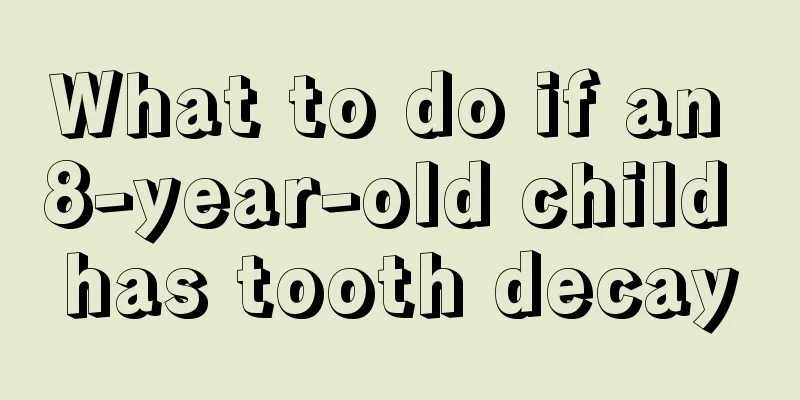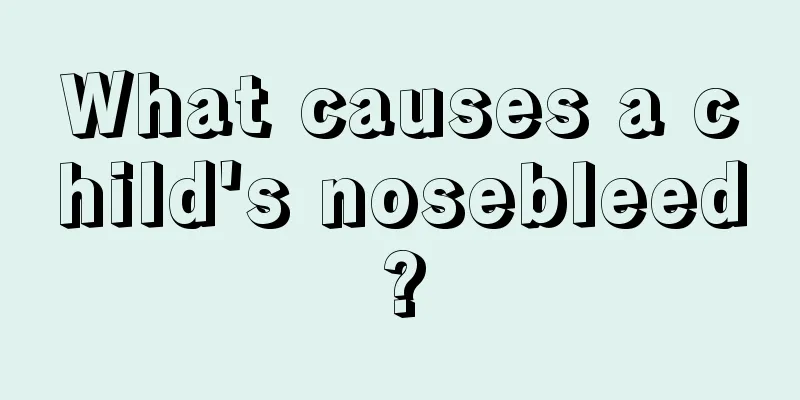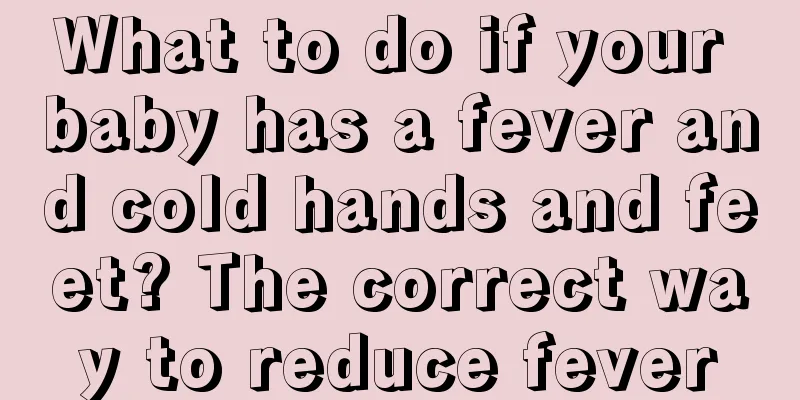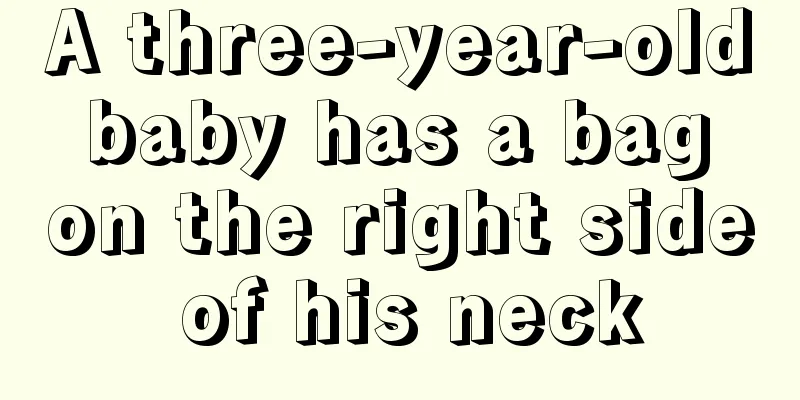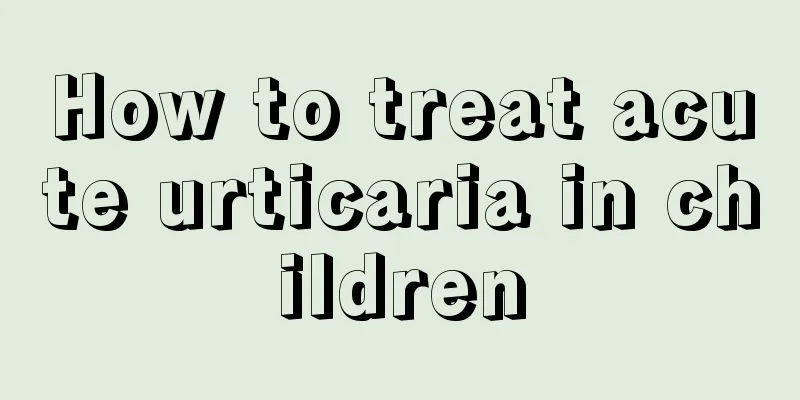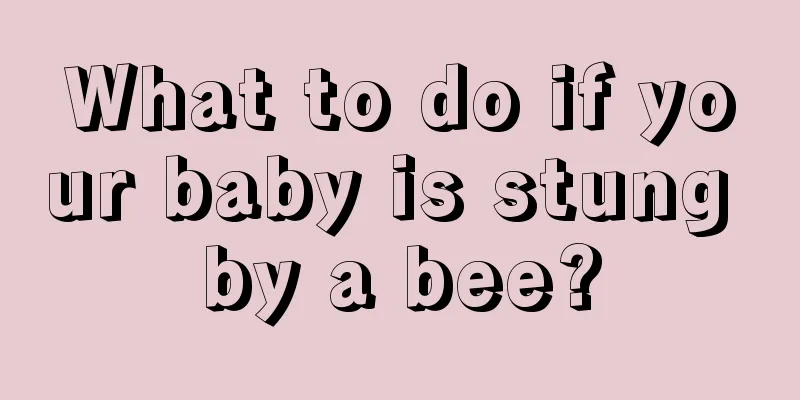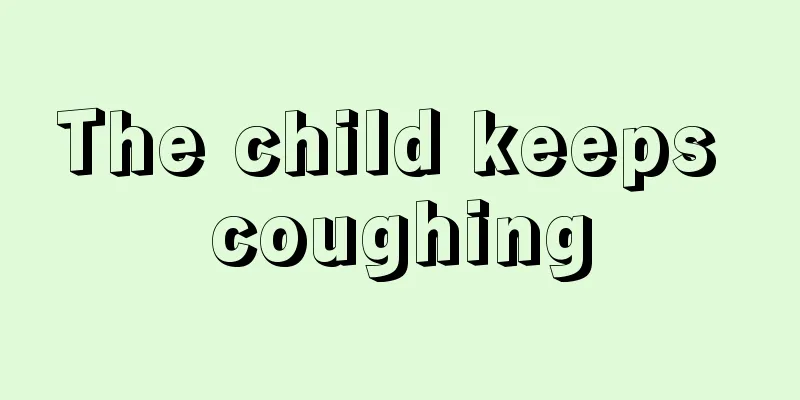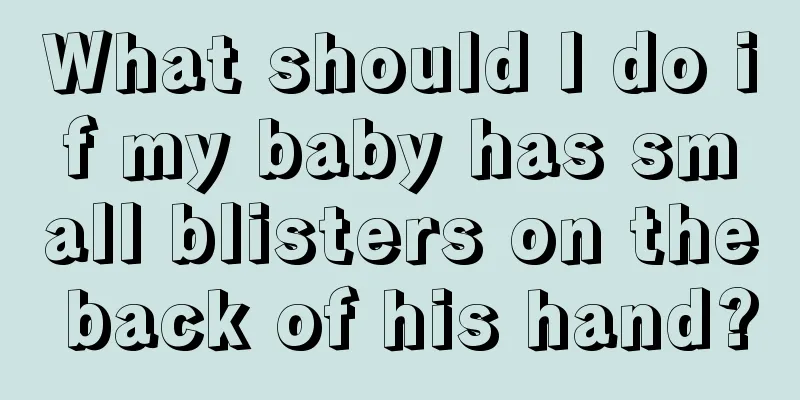What is going on when a child has a seizure?
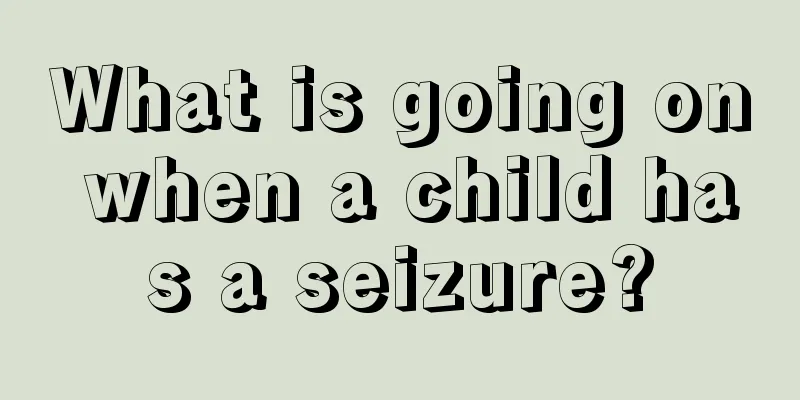
|
The physical health of children is very important. It is also an issue that parents are often concerned about. Once symptoms of the disease occur, parents will take timely measures to treat it. But some children will experience convulsions. The cause should be quite complicated because each child's physical condition is different. Convulsions should be a relatively scary symptom, and once they occur, they can also cause other serious diseases. But what happened to the child's seizure? When children have convulsions, they may experience whole-body or partial muscle rigidity, twitching, and spasms. Rigidity means that the muscles become stiff, the whole body becomes straight, and sometimes the head tilts back. In severe cases, the whole body can bend backward into a bow shape, which is medically called opisthotonos. The so-called spasm is the twitching of muscles, which can manifest as twitching of hands and feet, or twitching of face. During a convulsion, the person usually loses consciousness, has eyes rolling upward, foam coming out of the mouth, loses consciousness, does not respond when called, has incontinence, and sometimes bites the tongue. The person often falls asleep after the convulsion. Convulsions usually do not last long, ranging from a few seconds to several minutes. By the time the patient is sent to the hospital, the convulsions have most likely stopped. In severe cases, the child may have repeated convulsions or last for dozens of minutes. The child's face may turn blue and the breathing may become irregular. At this time, the child must be rushed to the hospital as soon as possible.type The causes of convulsions in children are very complex. Common causes can be divided into two categories according to whether there is fever or not. Afebrile seizures That is, convulsions are not accompanied by fever, which mainly includes two diseases: one is hypocalcemic tetany in children, which is caused by convulsions due to calcium deficiency in the body. It is more common in infants under 1 year old. Calcium tablets contain vitamin D, which is the carrier of calcium ions absorbed by the bone marrow, which can increase the body's absorption of calcium ions exponentially and make the absorption better. Another is epilepsy, which is commonly known as "epilepsy"; others include sequelae of encephalitis, kernicterus, etc. Febrile seizures That is, convulsions are accompanied by fever. This type mainly includes two diseases. One is febrile convulsions caused by high heat stimulation, which is more common in infants and young children under 3 years old. The other is due to infection of the central nervous system, such as encephalitis, meningitis, etc. Of course there are other reasons, such as poisoning, tumors, etc.
When a child has a seizure for the first time, parents should not panic, but should stay calm and take immediate measures. First, let the child lie flat on the bed to prevent falling. Tilt the head to one side to prevent secretions from blocking the airway and causing suffocation. Tilt the head slightly back and slightly raise the neck. This can prevent the root of the tongue from falling back and keep the airway open. You can wrap the handle of a spoon with gauze or cloth or place a pair of chopsticks between your teeth to prevent your tongue from being bitten. If your teeth are clenched, do not pry them open with force to avoid damaging your teeth. If convulsions are accompanied by high fever, the patient should be actively cooled down, such as by diluting alcohol or white wine with twice the amount of water, and then doing an alcohol bath or placing an ice pack on the head. Rapid cooling can stop the convulsions. Of course, no matter what measures are taken, they are only stopgap measures at home, and ultimately the patient must be rushed to the hospital. On the way to the hospital, the sick child should be closely observed and should not be wrapped tightly in a blanket, which could cause the child to suffocate without being discovered. After arriving at the hospital, the doctor will examine and determine the cause of the convulsion, and the fundamental solution is to treat the cause. If you are deficient in calcium, you should supplement it. Central nervous system infections should be treated with antibiotics. In addition, oral, intramuscular, and intravenous sedatives are effective measures to control the recurrence of convulsions. The doctor should decide which drug to use and which method to use. In addition, children with convulsions can be treated with a separate brain pacemaker.
In addition to controlling convulsions, febrile convulsions must also reduce fever in a timely manner, actively identify the cause of the fever, and give appropriate treatment. Because of the high recurrence rate of febrile seizures, it is very important to prevent recurrence. Preventing recurrence means completely avoiding another seizure at a high-risk age (before 6 years old), preventing status convulsante, reducing the occurrence of epilepsy, and avoiding intellectual development disorders. Currently, the intermittent medication method is commonly used, that is, after the first attack, the medication is taken immediately when fever occurs. This method is easily accepted by parents. However, if phenobarbital is used, it cannot actually achieve the purpose of preventing recurrence. Because phenobarbital must be taken regularly for at least 7 days to reach a stable therapeutic concentration in the blood, and it takes 4 to 6 hours for phenobarbital to reach its peak blood concentration after a single oral dose, this method cannot provide protection when the body temperature rises suddenly. Therefore, some people have tried using tranquilizer suppositories, 5 mg each time, once every 8 hours during the fever period, which has a certain effect. Pediatric convulsions have a certain impact on children's health. Active prevention is an effective measure to protect children's health. The main methods of prevention are: 1. Strengthen care and physical exercise for children. Open windows frequently to ventilate the room and let children go outdoors more often to help the body adapt to the environment and reduce the occurrence of infectious diseases. 2. Pay attention to nutrition. In addition to milk, children should also be given complementary foods, such as cod liver oil, calcium tablets, vitamin B[1] and vitamin B[6], and various minerals. Children should not be allowed to starve to avoid hypocalcemia and hypoglycemia convulsions. 3. Use medications appropriately and reasonably to prevent children from accidentally taking toxic medications. 4. Strengthen care. Prevent children from hitting their heads and causing brain trauma, and never hit children on the head with your hands at will. Predisposing factors There are many causes of neonatal convulsions, and sometimes several factors exist at the same time. It is very important to diagnose the cause, which is the key to special treatment and prognosis estimation. The main causes are as follows: Perinatal asphyxia Perinatal asphyxia can cause hypoxic-ischemic encephalopathy, which is mainly seen in full-term infants. It is characterized by impaired consciousness, little movement of the limbs, or weakness of the limbs. In severe cases, convulsions occur. Convulsions occur about 12 hours after birth and begin as mild attacks. Later, tonic or multifocal clonic convulsions may occur, which can cause death. In severe cases, there is intracranial hemorrhage, which is usually limited to the subarachnoid space and ventricular substance, and death usually occurs 3 to 4 days after birth. Intracranial hemorrhage due to birth trauma It is more common in full-term infants with larger birth weight. It is caused by physical injury to the head due to difficult labor or prolonged labor, which causes tearing of the tentorium cerebellum or the falx cerebri, resulting in massive subdural hemorrhage. Neurological symptoms often appear 12 to 24 hours after birth, and localized or multifocal convulsions appear 2 to 3 days after birth. Periventricular and intraventricular hemorrhage in premature infants The subependymal embryonic germinal matrix of premature infants is rich in capillaries, extremely sensitive to hypoxia and acidosis, and prone to bleeding. Neurological symptoms often appear after suffocation and hypoxia, including drowsiness, irregular breathing rhythm, bulging and tense anterior fontanelle, and tonic or multifocal clonic convulsions soon occur. Those with heavy bleeding will die within 1 to 2 days. Infect Purulent meningitis is the most common type, which is usually a postnatal infection and occurs one week after birth. The seizures begin as mild ones and then become tonic or multifocal clonic. Both neonatal sepsis and congenital intrauterine viral infection can cause neonatal seizures. Metabolic abnormalities Hypoglycemia, hypocalcemia, hypomagnesemia, hypernatremia and hyponatremia, and amino acid metabolism disorders can all cause neonatal convulsions. In addition, vitamin B6 deficiency can cause convulsions shortly after birth, which are ineffective with sedatives. After vitamin B6 injection, the symptoms disappear within a few minutes. Drug withdrawal syndrome The fetus receives opiates or barbiturates through the placenta without interruption after birth, which may cause convulsions, often accompanied by irritability, tremors, vomiting and diarrhea. Diagnosis is based on the mother's drug history; seizures usually begin 24 to 48 hours after birth. Kernicterus It is due to severe hyperbilirubinemia, a large amount of free bilirubin passes through the blood-brain barrier and is deposited in the basal ganglia of the brain, affecting the energy metabolism of cells and causing neurological symptoms, manifested as convulsions and opisthotonos. |
<<: The white of the child's eye has bloodshot
>>: Why do people have seizures?
Recommend
What to do if your child has a bad mouth
Children must develop good hygiene habits from an...
What causes a bump on the back of a baby's head?
In fact, most of the time babies are not yet adap...
What are some tips for treating baby’s runny nose?
When the weather changes, children are prone to c...
Causes of asthmatic bronchitis infection in children
Children are the apple of their parents' eyes...
What is the normal sleep time for newborns?
Once a child is born, many parents are very conce...
5 signs your child may be sick
Infants and young children have poor adaptability...
What to do if children bite their nails
I believe that every one of my friends has tried ...
Introduction to cerebellar tonsillar herniation
Tonsillar herniation is generally a congenital de...
Why do children peel their hands?
Children's hands peeling mainly occurs when t...
Baby sleepiness after swimming
Children's sleep pattern is based on their ag...
Can children drink brown sugar water? Do you know that brown sugar has the effect of nourishing the stomach?
I believe everyone has the experience of drinking...
What causes hair loss in boys?
If a boy has hair loss, the top of the head will ...
How to deal with children's throat choking
Children's throats are very fragile. If they ...
What to do if baby has prickly heat on forehead
Prickly heat, also known as "heat rash"...
Can a nine-month-old baby eat shrimp?
Shrimp has delicious meat and is a kind of seafoo...
